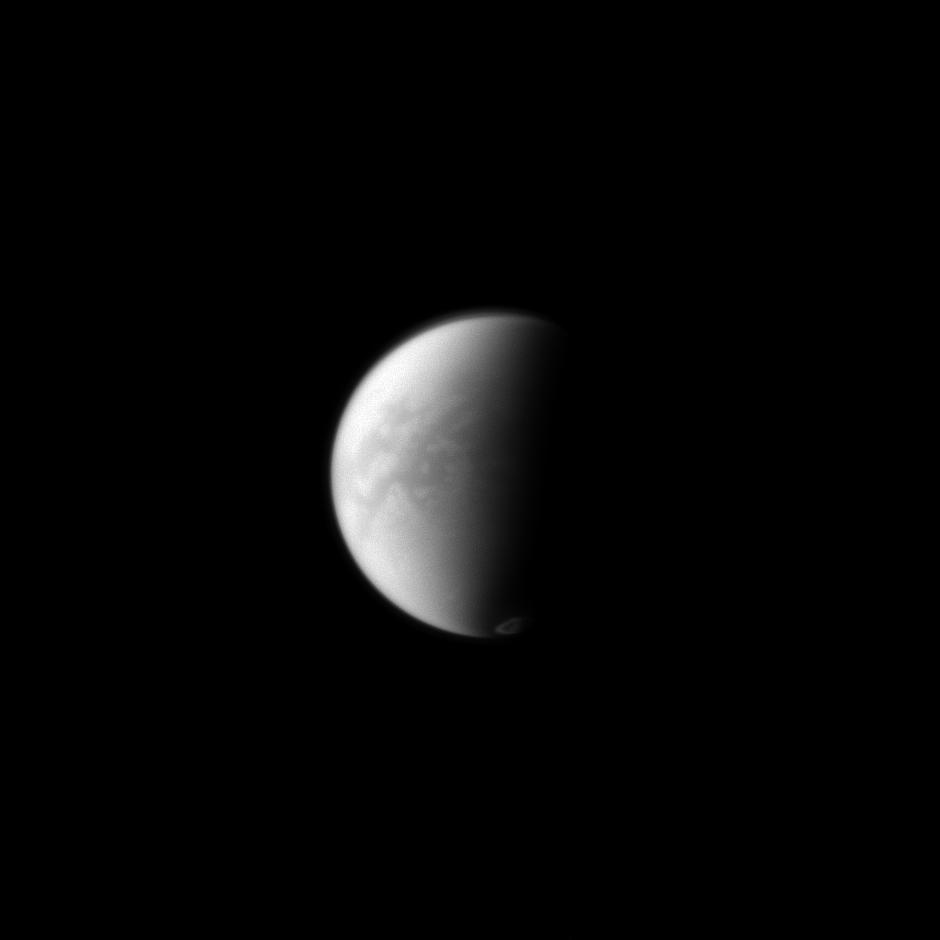Senkyo and Vortex

| PIA Number | PIA14645 |
|---|---|
| Language |
|
The Cassini spacecraft simultaneously peers through the haze in Titan's equatorial region down to its surface and captures the vortex of clouds hovering over its south pole just to the right of the terminator on the moon's dark side.
The dark region near Titan's equator is Senkyo. See Details of Dark Senkyo for a closer view of Senkyo and to learn more. For a color image of the south polar vortex on Titan, see Titan's Colorful South Polar Vortex. For a movie of the vortex, see Titan's South Polar Vortex in Motion.
Lit terrain seen here is on the Saturn-facing hemisphere of Titan (3,200 miles, or 5,150 kilometers across). North on Titan is up and rotated 11 degrees to the left. The image was taken with the Cassini spacecraft narrow-angle camera on Sept. 20, 2012 using a spectral filter sensitive to wavelengths of near-infrared light centered at 938 nanometers.
The view was obtained at a distance of approximately 1.8 million miles (2.9 million kilometers) from Titan and at a Sun-Titan-spacecraft, or phase, angle of 84 degrees. Image scale is 11 miles (17 kilometers) per pixel.
The Cassini-Huygens mission is a cooperative project of NASA, the European Space Agency and the Italian Space Agency. The Jet Propulsion Laboratory, a division of the California Institute of Technology in Pasadena, manages the mission for NASA's Science Mission Directorate in Washington. The Cassini orbiter and its two onboard cameras were designed, developed and assembled at JPL. The imaging team is based at the Space Science Institute, Boulder, Colo.
For more information about the Cassini-Huygens mission visit http://saturn.jpl.nasa.gov or http://www.nasa.gov/cassini . The Cassini imaging team homepage is at http://ciclops.org .
Credit: NASA/JPL-Caltech/Space Science Institute
